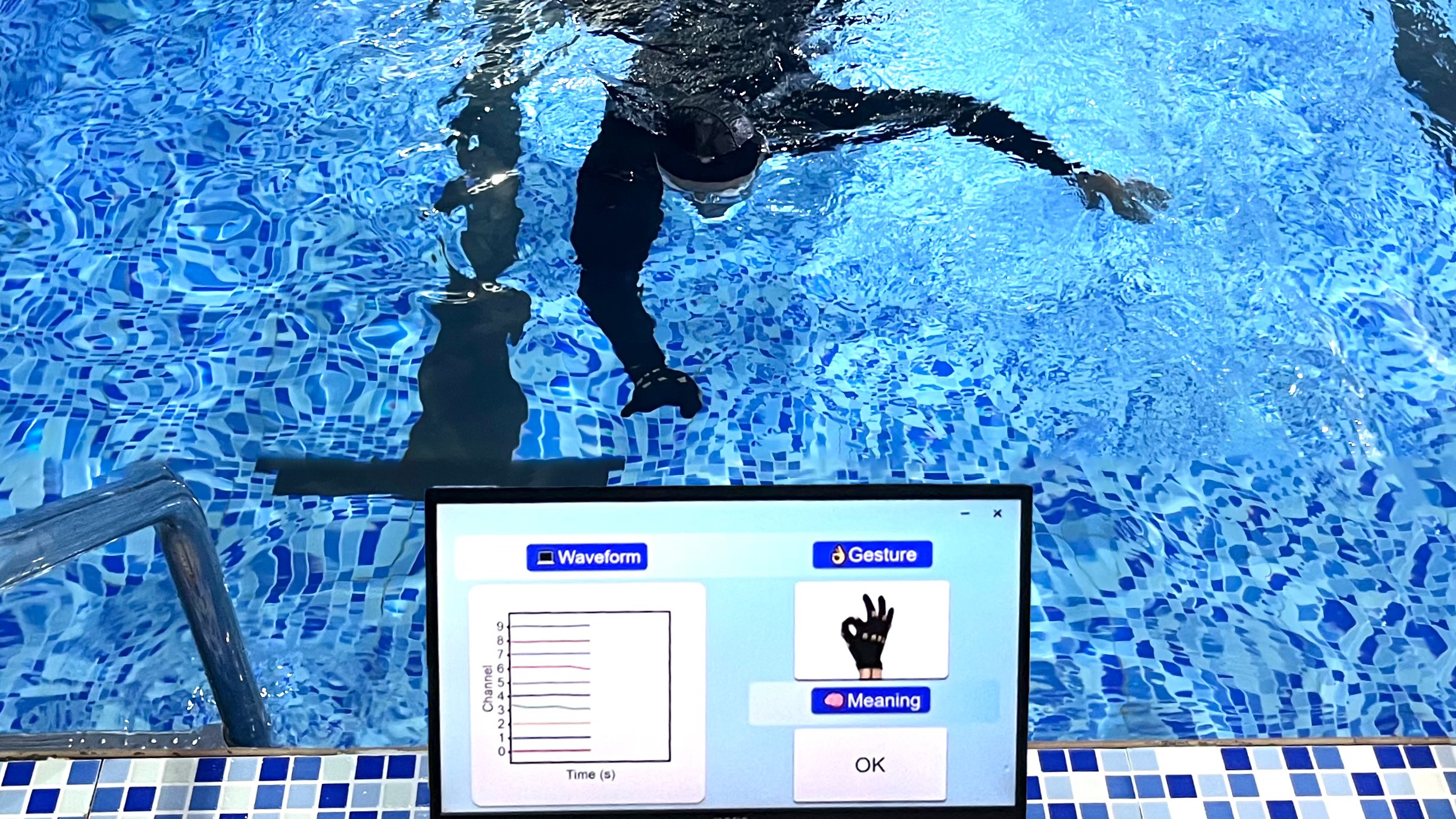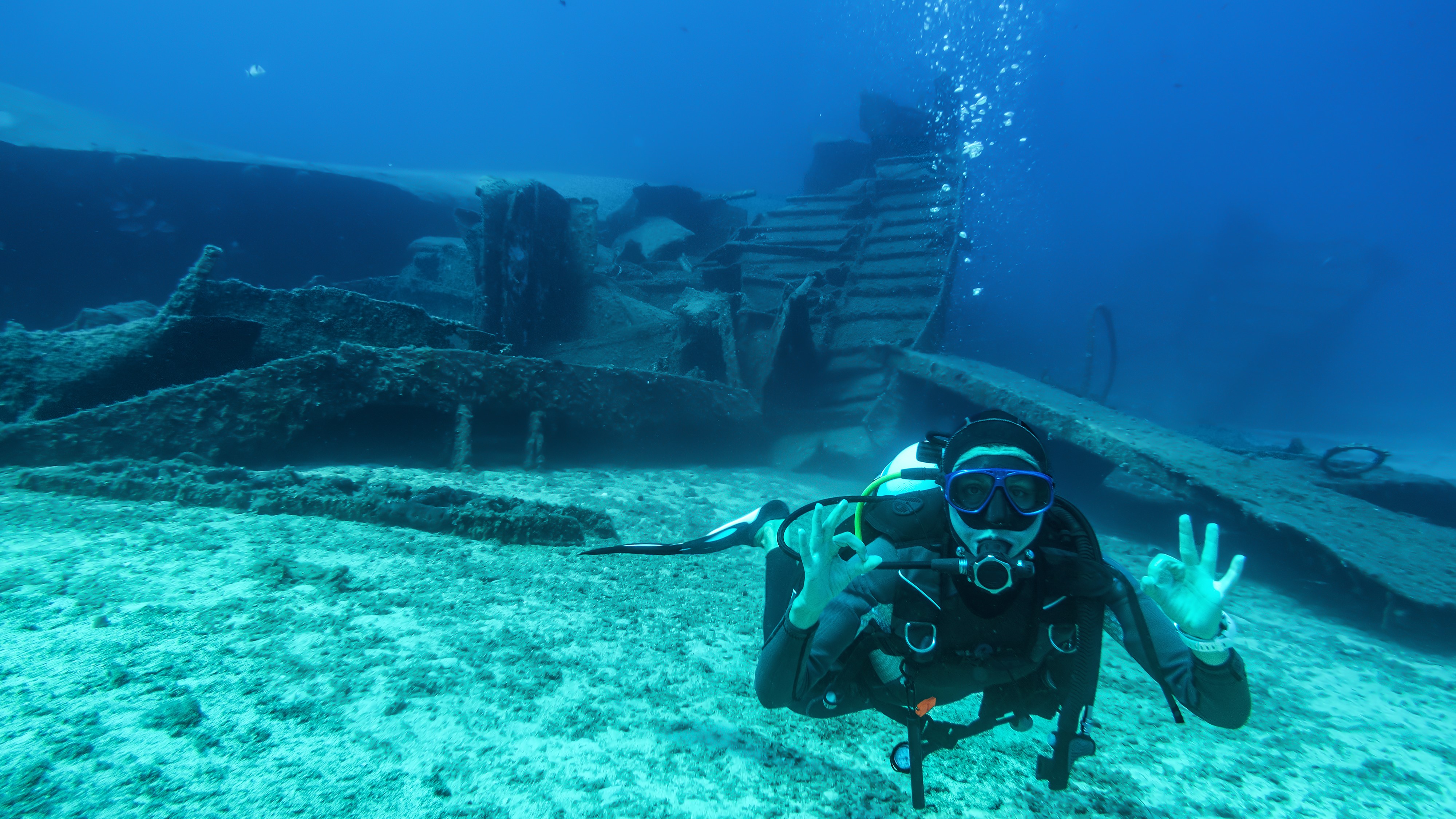Waterproof e-gloves could one day help scuba divers communicate with the surface
Researchers have designed waterproof gloves equipped with sensors that can translate hand gestures into messages, which could help divers communicate better.

Researchers have designed a waterproof e-glove that could help scuba divers better communicate with each other and with people on boats on the surface using hand signals.
Powered by artificial intelligence (AI), the "hand gesture recognition glove" (GRG) is equipped with sensors that produce electrical pulses in response to 16 hand gestures commonly used by divers underwater, including the index finger-to-thumb gesture for "OK," according to a study published April 10 in the journal ACS Nano.
These pulses are then transmitted to a computer capable of translating them into words, which could enable more efficient communication between divers and with people at the surface.
E-gloves are not a new concept and are already in development — for example, to help people who have experienced a stroke regain their fine motor skills. But, until now, designing an e-glove that is both waterproof and comfortable to wear remained a challenge.
The electronic sensors integrated into the new design are inspired by the shape and layout of starfish's tube-like feet, according to the study. Electrical signals are created by a series of flexible microscopic pillars, which the researchers embedded in thin sheets of a waterproof plastic material called polydimethylsiloxane. They then coated the micropillar-studded sheets in a conductive layer of silver and sandwiched two pieces together with the micropillars facing inward to create a sensor.
Related: Fluid leaked from scuba diver's blood vessels after 100-foot cave dive in rare medical case
Each sensor is roughly the size of a USB-C port and detects different pressures, according to a statement. To create an e-glove that responds to hand movements, the researchers individually packed 10 sensors in self-adhesive bandage and sewed them onto the knuckles and first finger joints of their prototype.
Get the world’s most fascinating discoveries delivered straight to your inbox.
With the help of a participant wearing the e-glove, the team then trained a machine learning algorithm to recognize the electrical signals corresponding to 16 hand gestures commonly used during diving. They used the algorithm to create a computer program, which translated these gestures into words with 99.8% accuracy, according to the study.
"Basic diver to diver hand signals work well in decent visibility but are more tricky at night or in poor conditions and obviously don't provide a means of communicating with the surface," Keiron Fraser, an associate professor in marine conservation and head of the scientific diving program at the University of Plymouth in the U.K., told Live Science in an email. Fraser was not involved in designing the glove.
The design may be particularly useful for operations that require contact between scuba divers and the surface, Fraser said. During their explorations, Fraser and his colleagues use voice communication systems that are either hardwired or transmit through water, but "the kit is bulky and expensive," he said. Military and commercial divers also use voice communications, but these messages are easy to intercept and may therefore pose a security risk.
Waterproof e-gloves could provide discrete communication channels during sensitive operations — and while the military has the technology to transmit typed messages underwater, "a gloved system might be quicker than typing," Fraser said.

Sascha is a U.K.-based staff writer at Live Science. She holds a bachelor’s degree in biology from the University of Southampton in England and a master’s degree in science communication from Imperial College London. Her work has appeared in The Guardian and the health website Zoe. Besides writing, she enjoys playing tennis, bread-making and browsing second-hand shops for hidden gems.



